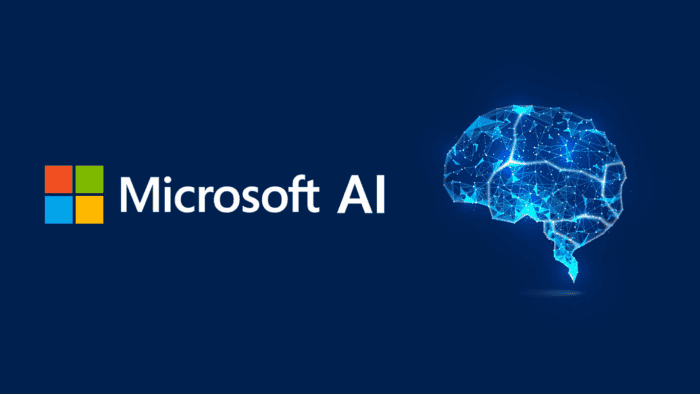Microsoft is gearing up to enter the competitive AI language model arena with a new product, codenamed “MAI-1”. This new model is being developed in-house. Coming from Microsoft, we expect this product to make a statement, challenging the likes of Google, Anthropic, and even OpenAI.

Mustafa Suleyman Leads the Charge
The development of MAI-1 is being overseen by Mustafa Suleyman, a former Google AI leader who most recently served as the CEO of the AI startup Inflection. Microsoft acquired Inflection’s intellectual property rights for $650 million in March and hired the majority of its staff, including Suleyman.
While MAI-1 may utilize some of the training data and technologies from Inflection, it is a distinct Microsoft creation and not a rebranded Inflection model. Suleyman’s background at Google AI and his experience leading Inflection add significant expertise to the development of MAI-1.
Challenging Industry Leaders
Microsoft’s decision to develop its large language model (LLM) comes amidst the ongoing competition for dominance in the rapidly evolving AI landscape. The new MAI-1 model is expected to be “far larger” than Microsoft’s previous smaller, open-source models, with approximately 500 billion parameters.
This scale puts MAI-1 in a position to compete with industry giants like OpenAI’s GPT-4, which boasts over 1 trillion parameters, and Meta’s Llama 2 models, which have up to 70 billion parameters. Microsoft’s vast data resources and computing power, including large clusters of servers with Nvidia’s graphic processing units. These should play a crucial role in training and supporting the development of MAI-1.
Diversifying AI Offerings
Microsoft’s investment in MAI-1 underscores its commitment to staying competitive in the AI field. The tech giant’s previous $10 billion investment in OpenAI and the acquisition of Inflection’s intellectual property and staff suggest a strategic shift towards building its in-house AI capabilities.
This move comes after internal emails from 2019 revealed Microsoft’s Chief Technology Officer Kevin Scott expressing concerns about the company’s lack of progress in the AI space compared to competitors like Google and OpenAI. The development of MAI-1 represents a significant step forward for Microsoft as it seeks to challenge industry leaders and diversify its AI offerings.

Potential Applications and Implications
The exact purpose and applications of MAI-1 are not yet public. After the product hits the public domain, there will be an evaluation of its performance and capabilities. However, the scale and ambition behind the project suggest that Microsoft is positioning MAI-1 to compete with the most advanced AI language models currently available.
The introduction of MAI-1 could have far-reaching implications for the AI landscape. As Microsoft seeks to challenge the dominance of Google, OpenAI, and others, the competition for AI supremacy is likely to intensify. This could lead to further advancements in the field, as well as potential regulatory scrutiny and concerns around the ethical implications of these powerful AI models.
MAI-1 vs. GPT-4
Microsoft’s upcoming AI model, codenamed “MAI-1,” is poised to challenge the dominance of industry-leading language models like OpenAI’s GPT-4. While the details of MAI-1 are still emerging, a comparison between the two models provides insights into the evolving AI landscape.
One key difference is the scale of the models. MAI-1 should have approximately 500 billion parameters. This is a significant figure but still less than the over 1 trillion parameters in GPT-4. This suggests that GPT-4 may have a slight edge in terms of raw processing power and handling complex tasks. However, Microsoft’s vast data resources and computing infrastructure could help offset this gap.
In terms of capabilities, both models are designed to excel at a wide range of tasks, from natural language processing to code generation. GPT-4 has demonstrated impressive performance on academic and professional benchmarks, including the Uniform Bar Exam. Since there is no official information, the extent of MAI-1’s capabilities remains under wraps. However, Microsoft’s investment in the project and the leadership of former Google AI executive Mustafa Suleyman suggest that the model will be highly capable.
Another area of distinction is the models’ approach to safety and ethics. GPT-4’s training helps it to limit the possibility of harmful responses and refuse requests for disallowed content. At the moment, we can not tell how MAI-1 will handle safety and ethics. However, the company’s commitment to responsible AI development is likely to be a priority.

Conclusion
Microsoft’s development of the MAI-1 AI model represents a step forward for the company. It shows the company’s efforts to establish itself as a formidable player in the rapidly evolving AI landscape. Microsoft is a big company, thus, it can produce products that will challenge the industry’s leading products. The launch of MAI-1 will undoubtedly have far-reaching implications, both for Microsoft’s competitive position and the broader AI ecosystem.
The impending release of Microsoft’s MAI-1 language model represents a challenge to the dominance of industry leaders like OpenAI’s GPT-4. While GPT-4 boasts an impressive 1 trillion parameters, MAI-1 should have around 500 billion parameters. This puts it in a strong position to compete. Microsoft’s vast data resources and computing power, combined with the expertise of former Google AI executive Mustafa Suleyman, suggest that MAI-1 will be a highly capable model across a wide range of tasks. However, GPT-4’s proven performance on academic and professional benchmarks indicates that it may still have a slight edge in terms of raw processing power and task-handling abilities.
The introduction of MAI-1 is likely to intensify the competition in the AI landscape. This can potentially lead to further advancements in the field. As Microsoft challenges the dominance of industry leaders, the tech community will watch the implications for the future of AI.





